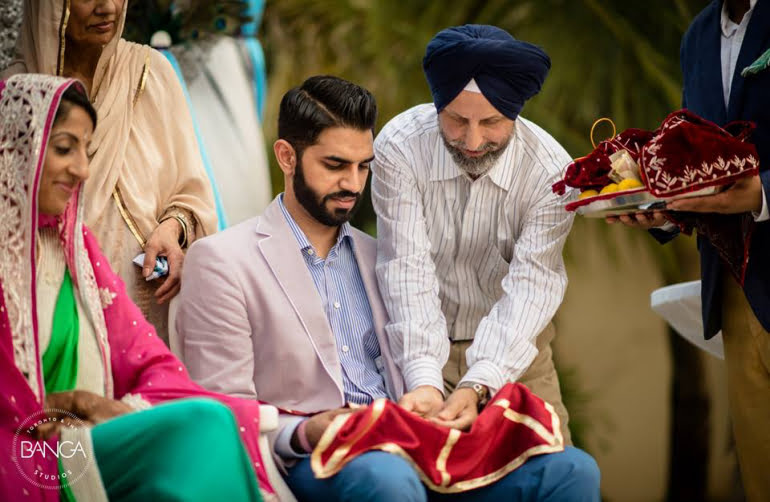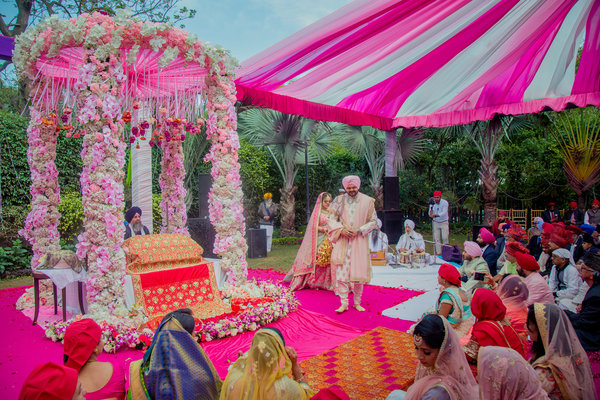Marriage is a significant investment of love, pleasure, joy, time, and respect that pays out in spades. However, when it comes to a Punjabi wedding, it
Appears that the happiness in the air contains fun, favor, and entertainment. It multiplies even more when you discover the perfect mate for your life. Who not only spends their entire life with you, but also doubles your love, joy, and respect through their efforts. Although, it is becoming challenging nowadays to find a good partner for a happy married life. So, if you are in a search of a capable partner for your life for this need not worry about it. There are various profiles available on the Best Sikh Matrimony web portal.
Here in this reading, you will come to know about the major differences in the Sikh marriage ceremonies. Hope you would be pleased to know about the various ceremonies which are followed during Sikh weddings. So here we go-
Roka and Ring ceremony

In Sikh communities, Roka is a customary pre-wedding rite. This rite denotes that the bride and groom’s relationship is now established and will not be maintained by anyone else. Both families give gifts and celebrate the accomplishments of their relationships. Roka is presently the scene of
numerous engagements, despite the fact that there isn’t usually a ring exchange. Once the couple has developed a bond, the two families set a date for the engagement, and the couple puts rings on each other.
Dholki and Kirtan
Worship and kirtan are held at the bride and groom’s house, with the ladies of the family taking center stage. This program, which runs throughout the
day and sometimes ends late at night, is intended to give the relationship a strong start. Following that is the dholki, or concert. The family dances and sings on the top of the drum. Nonetheless, its look has developed in recent years. Both families may be seen doing various choreographies during modern weddings that feature a DJ.
Mehndi and Jaggo rituals

This is a historic occasion. It entails the bride’s hands getting hennaed, for which the bride’s mother or an outside artist is invited. The bride’s feet, like her hands, are covered with gorgeous bridal henna patterns with the aim of
generating a richer color. The bridegroom’s hands are also adorned with mehndi. At the same time, the bride and groom stay up all night during the Jaggo ceremony to celebrate with everyone. During this moment, the bride’s aunt ignites the lamps and lays them on her head.
Chodha and Haldi
Turmeric is used to make brides’ and groom’s hands yellow. Members of his family and close friends are included. Her uncle gave the young lady a
bracelet. Everyone wishes the bride well in her future. While wearing it, the bride’s eyes are obscured. A rag is then placed around the bangle.
Horseback riding and Sehra

When the boy is ready, his sister dresses him in the bridegroom’s clothing.
Following that, there is a brief puja. Antimony is also placed on her brother in order for him not to look down on others. His family and friends present him with a horse. He is accompanied by a small child, usually a younger brother or nephew.
Kanyadan and Milani
The girl greets the bridegroom as he arrives. Both families exchanged embraces. The bride is dressed to the nines, and the couple is decked out in jewels. Following that, all of the rites are performed, and the girl’s parents gift her with Kanyadan before leaving on a sorrowful note.
So, If you’re from a Sikh family and want to follow all these ceremonies then you must register yourself on the Sikh matrimony portal to search for a good companion for the rest of your life. Punjabi parents can also search for the perfect Sikh bride or groom for their son or daughter on it.


